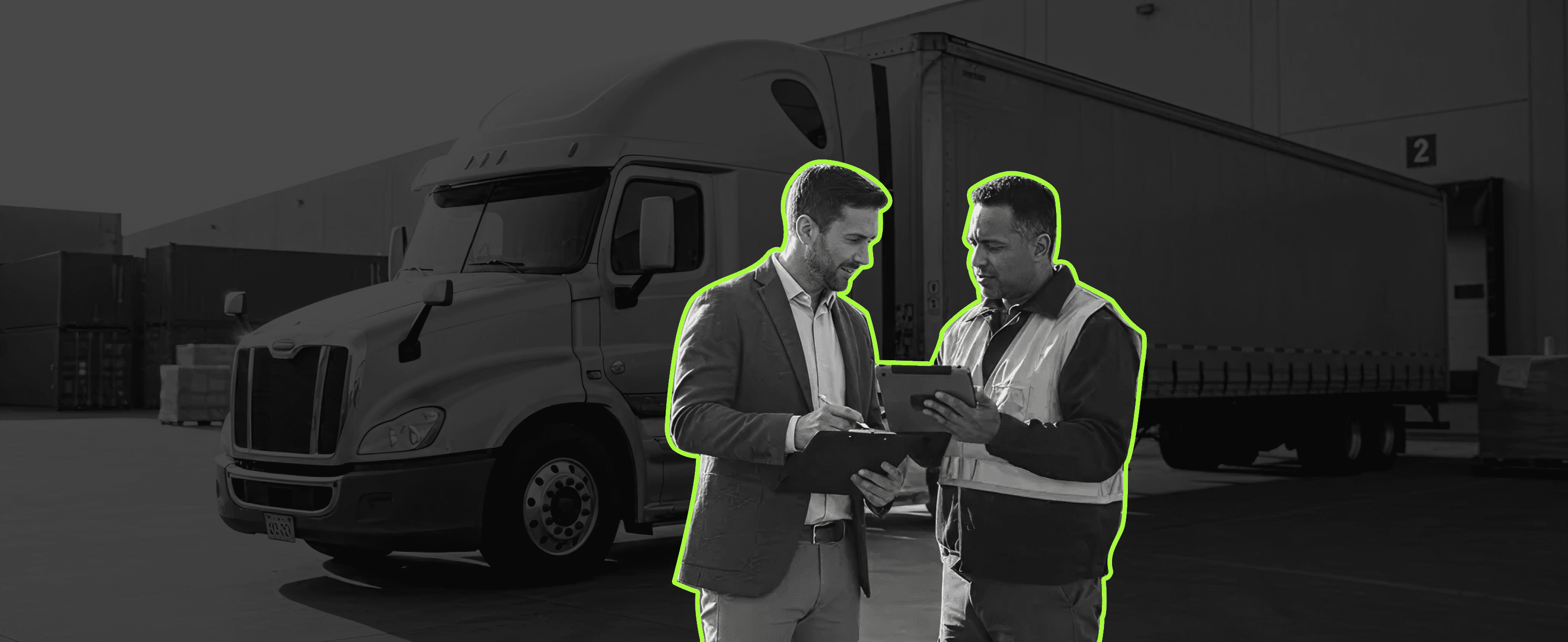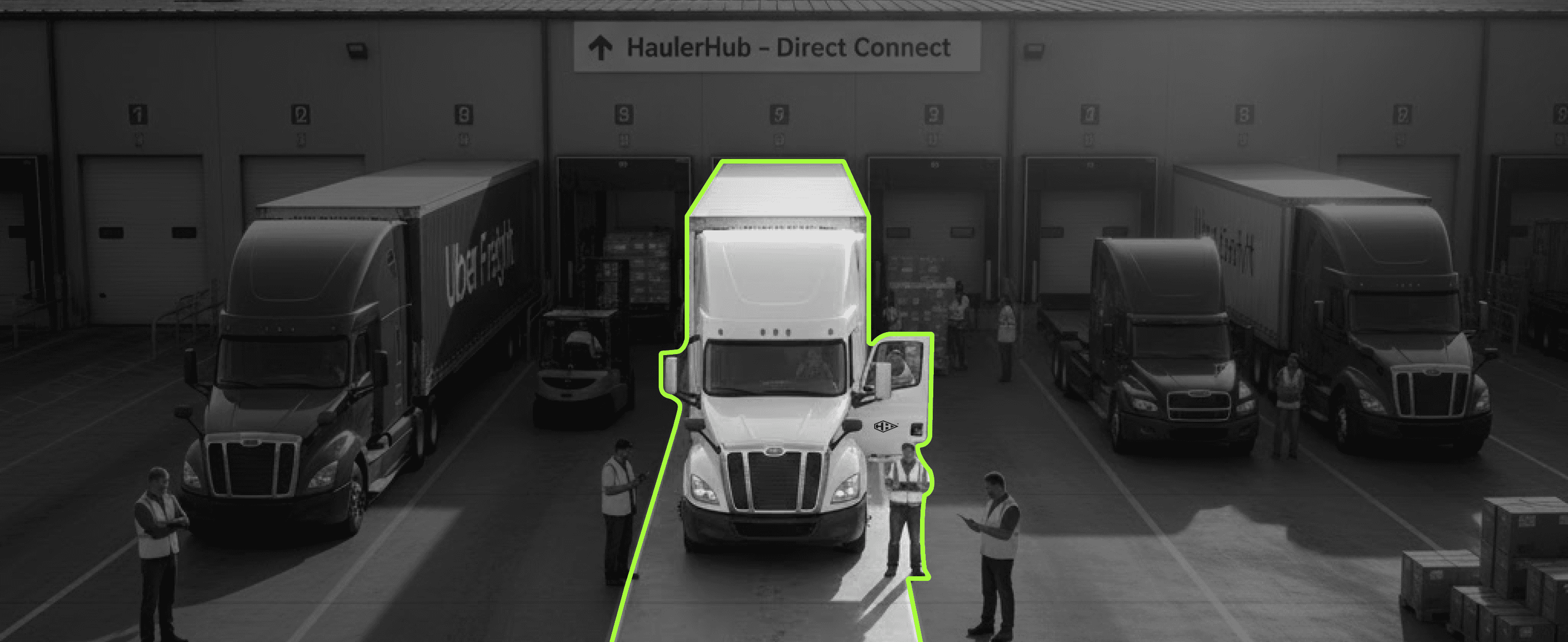Aug 27, 2025
Scroll to explore
Cargo theft costs the transportation industry over $15 billion annually, with incidents rising 60% year-over-year. Whether you're managing a small fleet or overseeing enterprise logistics, this comprehensive cargo theft prevention checklist gives you the tools to safeguard your shipments and protect your bottom line.
Understanding Cargo Theft: Know Your Enemy
Before diving into prevention strategies, it's crucial to understand the evolving landscape of cargo theft. Modern thieves employ sophisticated tactics that go far beyond simple smash-and-grab operations.
Types of Cargo Theft
Strategic Cargo Theft
Fraudulent identity schemes targeting freight brokers
Fake carrier credentials and documentation
Cyber attacks to access shipping information
Social engineering to manipulate supply chain personnel
Straight Cargo Theft
Direct theft from parked vehicles and warehouses
Hijacking during transit
Pilferage of high-value items
Opportunistic theft at truck stops and rest areas
Warehouse Theft
Inside job collaborations
After-hours facility break-ins
Loading dock vulnerabilities
Inventory discrepancy schemes
Pre-Transit Security Checklist
This foundation-setting phase determines your cargo's security throughout its journey.
Cargo Risk Assessment
Identify high-value freight requiring enhanced security protocols
Assess route-specific theft risks and hotspots
Review historical theft data for similar shipments
Determine appropriate security measures based on cargo value
Document special handling requirements for sensitive freight
Carrier Verification and Vetting
Verify DOT and MC numbers through official databases
Confirm carrier insurance coverage and validity
Check driver credentials and photo identification
Review carrier's security protocols and theft prevention policies
Validate equipment condition and security features
Conduct background checks on new carrier partnerships
Documentation Security
Implement secure pickup authorization procedures
Limit personnel with access to shipment information
Use tamper-evident seals with unique identification numbers
Photograph all documentation, seals, and equipment
Create digital copies of bills of lading and manifests
Establish communication protocols with carriers
Vehicle and Equipment Security Measures
Advanced security technologies form your first line of defense against cargo thieves.
GPS Tracking and Monitoring
Install multi-layered GPS tracking on tractors, trailers, and cargo
Set up geofencing alerts for route deviations
Enable real-time location monitoring with 24/7 dispatch
Use covert tracking devices to prevent tampering
Implement backup tracking systems in case of primary failure
Configure emergency alert systems for panic situations
Physical Security Equipment
Install high-security locks on trailer doors and cargo areas
Use king pin locks and glad hand locks on trailers
Deploy motion-activated cameras and surveillance systems
Install alarm systems with remote monitoring capabilities
Secure cargo with load bars, straps, and anti-theft devices
Apply tamper-evident seals at multiple access points
Advanced Technology Integration
Implement RFID tags for individual cargo tracking
Use smart containers with breach detection sensors
Deploy door sensors that alert to unauthorized openings
Install dashcams with cloud storage capabilities
Enable remote engine immobilization systems
Set up automated threat detection algorithms
Driver Training and Protocols

Your drivers are your most valuable assets in preventing cargo theft.
Security Awareness Training
Conduct regular training on cargo theft prevention techniques
Educate drivers on recognizing suspicious activities and threats
Train on proper communication protocols during emergencies
Review company security policies and procedures quarterly
Provide updates on current theft trends and hotspots
Establish clear escalation procedures for security concerns
Operational Best Practices
Avoid stopping within first 200 miles or 4 hours of departure
Park only in well-lit, secured areas with surveillance
Conduct thorough pre-trip and post-trip vehicle inspections
Vary routes and timing to avoid predictable patterns
Never discuss cargo details with unauthorized personnel
Report route deviations and delays immediately
Emergency Response Procedures
Establish 24/7 emergency contact protocols
Train drivers on theft reporting procedures
Provide emergency contact cards with law enforcement numbers
Create driver panic button procedures and testing schedules
Develop hostage situation response protocols
Practice emergency communication scenarios regularly
Warehouse and Facility Security
Protecting cargo extends beyond vehicles to storage and transfer facilities.
Perimeter Security
Install perimeter fencing with anti-climb features
Deploy motion sensors and intrusion detection systems
Use adequate lighting throughout the facility
Position security cameras at all entry and exit points
Implement access control systems for all personnel
Conduct regular security perimeter assessments
Internal Facility Controls
Restrict access to high-value cargo storage areas
Implement visitor management and escort procedures
Use security guards during high-risk periods
Install surveillance systems with recording capabilities
Conduct regular inventory audits and reconciliation
Establish clear loading and unloading protocols
Personnel Security Measures
Perform comprehensive background checks on all employees
Implement two-person verification for high-value shipments
Monitor employee access patterns for anomalies
Provide security awareness training for warehouse staff
Establish whistleblower protections and reporting systems
Create employee accountability measures and consequences
Supply Chain Security and Communication
Effective communication and coordination prevent strategic cargo theft.
Information Security Protocols
Limit shipment information on a need-to-know basis
Use secure communication channels for sensitive data
Implement cybersecurity measures to prevent data breaches
Regularly update and patch all software systems
Train staff on phishing and social engineering threats
Conduct periodic security assessments of IT infrastructure
Partner Verification Systems
Maintain updated database of authorized carriers and brokers
Verify all pickup requests through multiple confirmation methods
Use callback procedures to confirm pickup authorizations
Implement digital verification systems for carrier credentials
Share threat intelligence with trusted supply chain partners
Participate in industry security networks like CargoNet
Technology and Analytics Solutions
Leverage cutting-edge technology to stay ahead of evolving theft tactics.
Predictive Analytics and AI
Use data analytics to identify high-risk routes and times
Implement AI-powered threat detection systems
Monitor patterns to predict potential theft attempts
Use machine learning to optimize security resource allocation
Analyze historical data to improve prevention strategies
Deploy automated alert systems for suspicious activities
Integration and Automation
Connect all security systems through unified platforms
Automate threat response and notification procedures
Use API integrations for real-time data sharing
Implement automated compliance monitoring
Deploy self-learning security algorithms
Create automated reporting and analytics dashboards
Transit Security Monitoring
Continuous vigilance during transportation prevents theft opportunities.
Real-Time Monitoring Systems
Monitor all shipments through centralized command centers
Use 24/7 dispatch and tracking services
Implement automated exception reporting for route deviations
Deploy immediate response teams for security alerts
Maintain constant communication with drivers
Use predictive routing to avoid high-risk areas
Response and Recovery Protocols
Establish rapid response teams for theft incidents
Coordinate with law enforcement and recovery specialists
Implement cargo recovery procedures and timelines
Maintain relationships with investigative services
Use specialized recovery technology and databases
Create post-incident analysis and improvement procedures
Incident Response and Recovery
When prevention fails, rapid response minimizes losses and aids recovery.
Immediate Response Actions
Contact law enforcement immediately upon theft discovery
Notify insurance carriers within required timeframes
Activate tracking and recovery systems
Secure the crime scene and preserve evidence
Document all relevant information and circumstances
Coordinate with specialized cargo theft investigators
Investigation and Recovery Support
Provide full cooperation with law enforcement investigations
Share all available tracking and surveillance data
Coordinate with CargoNet and industry databases
Work with specialized recovery services
Monitor black market channels for stolen goods
Participate in industry intelligence sharing
Insurance and Risk Management

Proper coverage and risk management protect your business from financial losses.
Insurance Coverage Review
Verify adequate cargo insurance coverage limits
Understand policy exclusions and requirements
Ensure coverage includes theft during transit and storage
Review deductibles and claims procedures
Maintain compliance with carrier security requirements
Document all security measures for insurance purposes
Financial Risk Mitigation
Diversify high-value shipments across multiple loads
Implement financial limits on single shipment values
Use escrow services for high-risk transactions
Maintain business interruption insurance coverage
Create contingency plans for supply chain disruptions
Establish alternative carrier and route options
Compliance and Industry Standards
Stay current with evolving regulations and industry best practices.
Regulatory Compliance
Comply with TSA and DHS security requirements
Follow DOT safety and security regulations
Maintain CTPAT certification if applicable
Adhere to international shipping security standards
Stay updated on evolving security regulations
Conduct regular compliance audits and assessments
Industry Best Practices
Participate in industry security organizations
Attend cargo security conferences and training
Share threat intelligence with industry partners
Implement industry-recommended security standards
Stay informed about emerging theft tactics and countermeasures
Contribute to industry security improvement initiatives
Continuous Improvement and Assessment
Regular evaluation and updates keep your security measures effective against evolving threats.
Security Assessment and Testing
Conduct quarterly security assessments and gap analyses
Test all security systems and procedures regularly
Perform penetration testing on cybersecurity measures
Review and update security protocols based on threat changes
Benchmark security measures against industry standards
Engage third-party security consultants for objective assessments
Performance Monitoring and Metrics
Track key security performance indicators and metrics
Monitor theft incident rates and recovery percentages
Measure security investment return on investment
Analyze security cost-effectiveness across different measures
Report security performance to stakeholders regularly
Use metrics to drive continuous security improvements
Key Takeaways for Cargo Theft Prevention Success
Immediate Action Items:
Implement multi-layered GPS tracking and monitoring systems
Establish comprehensive driver training and emergency protocols
Verify all carriers and shipment documentation thoroughly
Deploy 24/7 monitoring and rapid response capabilities
Technology Investments:
GPS tracking with geofencing and real-time alerts
RFID and smart container technologies
Integrated security platforms with AI-powered analytics
Cybersecurity measures to prevent strategic theft
Process Improvements:
Create standardized security checklists for all operations
Establish clear communication and verification protocols
Implement regular training and assessment programs
Develop strong partnerships with law enforcement and recovery services
Your cargo's security depends on consistent execution of these prevention measures. This checklist provides the framework—but success requires commitment, investment, and continuous vigilance from your entire organization.
Remember: cargo thieves constantly evolve their tactics, so your security measures must evolve too. Regular assessment, technology updates, and industry collaboration are essential for staying ahead of emerging threats and protecting your valuable freight.
Checkout other blogs

Stay ahead of the supply chain.
Break free from costly and complex systems. Sign up with HaulerHub now and make shipping a breeze.




